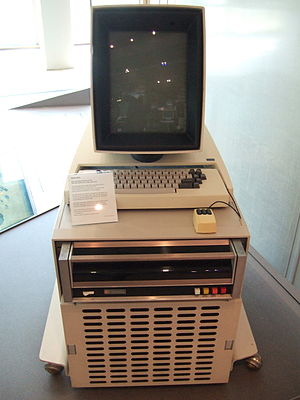
Xerox
Many of the things we do with our computers nowadays have been invented by Xerox. It’s an amazing story, and often recounted - but let me summarize it here. To be more precise, the story is about Xerox PARC, the Palo Alto Research Center.
Nearly everything that’s crucial for our computers today has either been invented there, or applied there for the first time.
Graphical displays, graphical user interfaces, WYSIWYG, windows, menus, Ethernet, laser printers, object-oriented programming.
These would all go on to be successfully implemented by every single computer company.
Except for Xerox.
The most striking examples of the PARC inventions
Laser printers
Especially important for professionals, producing razor-sharp prints. This invention was actually applied by Xerox, but it was popularized at a much larger scale by Canon and HP, for instance.
Bitmap graphics
Once, computer displays only contained black and white (or green) text, every character as big and boring as all the others. Nowadays, every single dot (or pixel) on the screen can be given any color, allowing us to display characters in any font, style and size. And, equally important: enabling us to display any picture or drawing on the screen.
For the original graphics displays, every pixel was represented by a single bit in the computers' memory. For the color screens we now use, every pixel requires multiple bits in memory. The computer that Xerox created, with a bitmapped display, was called the Alto (see picture). A bit of an early Mac.
Graphical user interface (GUI)
A combination of windows, icons and menus, using a mouse to make selections. The mouse had been invented before (at the Stanford Research Institute, near PARC), but at PARC it was used on a large scale for the first time.
WYSIWYG (What You See Is What You Get)
The principle where the computer screen displays text and images the exact same way they will be printed.
Ethernet
A Local Area Network (LAN) to connect computers, printers and other devices. Originally a coax cable, to which all devices were quite literally pinned. Later, the cables were replaced by our present “Cat 5/6/7” cables.
Object-oriented programming (OOP)
The researchers at PARC developed a computer programming language called Smalltalk. It was the predecessor of many modern object-oriented languages. OOP wasn’t completely invented by PARC; a number of ideas were stolen from the language Simula, developed in Norway a few years earlier. But PARC extended the ideas, and coined the term “object-oriented”.
Fumbling the future
So, what did Xerox do with all these clever and ground-breaking ideas?
Nothing, or almost nothing.
Xerox said: “Nah, we’re manufacturing copiers”.
A historical blunder,
because the world decided to go in the other direction.
The inventors who worked for PARC soon realized Xerox was making all the wrong decisions, and became very frustrated. Some of them left, taking their ideas to new companies. The inventors of the Ethernet, for example, started a company called 3Com, which was the leading networking company for many years.
Apple
Others, especially the inventors of OOP and the GUI, migrated to Apple Computer, not too many miles from PARC. At Apple, their ideas were much appreciated. As always, Apple understood the direction the world was heading.
The PARC ideas were improved and implemented in the Lisa (1982, not very successful) and the Macintosh (1984, still very popular). A little later, the LaserWriter was produced. It was a laser printer manufactured by Canon, exclusively for Apple. It was the beginning of a new, revolutionary, and nowadays massive market, called desktop publishing. A company like Adobe would not exist without it.
What’s left
Of course, our modern computers don’t look like the Alto and the Lisa anymore.
We now have touch screens, iPads, and iPhones.
Surely, Xerox didn’t have any influence on that?
Well, they did.
A little bit, at least.
One of the PARC researchers, a guy called Alan Kay, designed a computer in 1972. His dream was called the Dynabook. On paper, it looked like this:

A bit of an iPad, isn’t it? The state of the technology in 1972 didn’t allow for production of the Dynabook. But Alan Kay was right: this is how computers should work. It wasn’t important that it took an Alto and a Macintosh to get there. That was just a matter of time. Alan Kay later started working for Apple, so that might have contributed to what we now have in our hands every single day.
My contribution
In the days I worked for Apple myself (I haven’t contributed many historical ideas, I’m afraid - but I know I recognized them as being important), I frequently visited Silicon Valley. So, as a true believer, I rented a car and steared it up the Coyote Hill Road. And there it was, my Mecca: Xerox PARC!
It was a bit of a disappointment. Its genius didn’t drip off the walls. A building, just like many other Silicon Valley buildings. A few floors high only, because of the earthquakes. Some grass, green only thanks to the many water sprinklers. Plenty of cars in the parking lots surrounding the building, of course (even though Palo Alto was the only place were people could be seen riding bikes, thanks to Stanford University).
All that was left for me was to turn around.
Back to the future.
